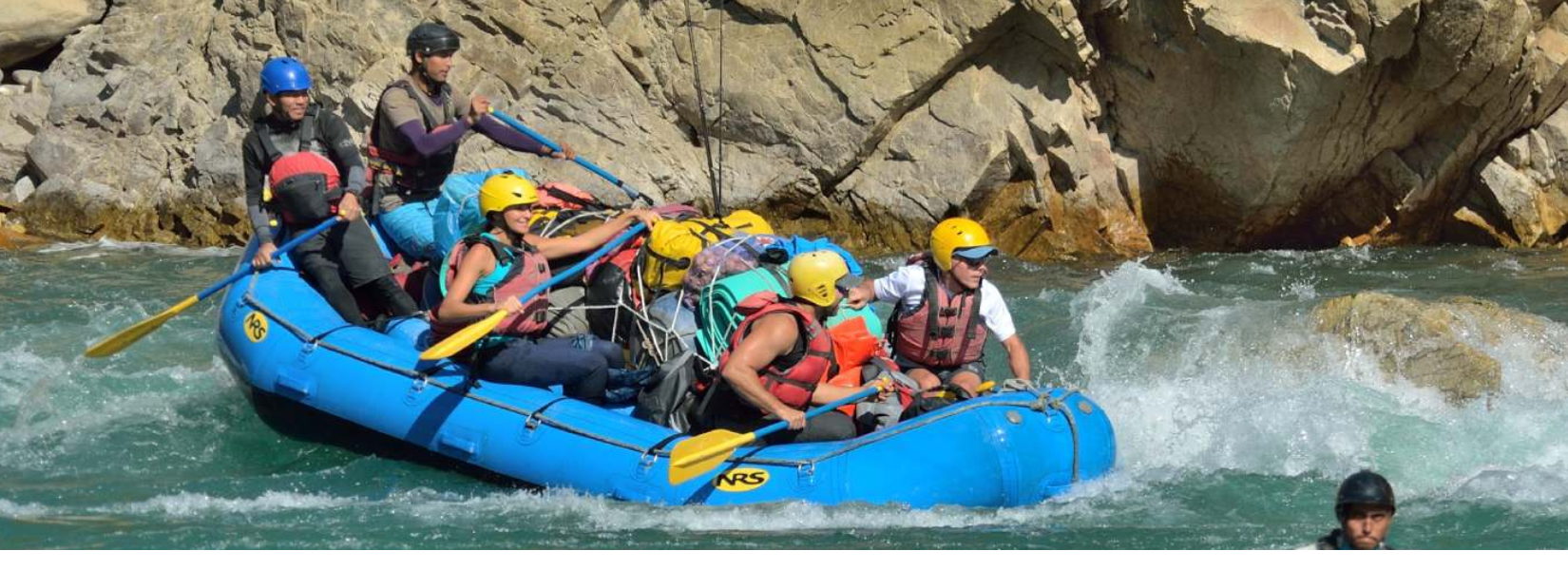About Bheri River Rafting
Bheri River Rafting is located in the mid-western region of Nepal which is a popular destination for white-water rafting enthusiasts. It is known for its thrilling rapids and scenic beauty; the river offers an exciting adventure through lush forests and rural landscapes. It flows from the high Himalayas, which provide a mix of challenging rapids and calmer sections that make it suitable for both beginners and experienced rafters. The river’s clear waters are surrounded by mountains, terraced fields, and traditional village, creating a picturesque backdrop for the rafting experience.
Rafting on the Bheri River typically takes place over a course of 6 to 7 days, with varying levels of rapids. The first day is usually spent navigating through class III and IV rapids, which offer an adrenaline-filled ride with plenty of splashes. As rafter progress, they encounter more challenging sections of the river, requiring teamwork and skill to maneuver through the fast-moving waters. Along the way, there are opportunities to stop for rest breaks, enjoy a riverside camp, and take in the natural beauty of the surrounding, including cascading waterfalls and dense jungles.
The rafting experience on the Bheri River also provides an immersive culture encounter. Participants can interact with local communities, who often live in a remote area accessible only by the river. These villages offer a glimpse into the traditional lifestyle of Nepal’s rural population, where agriculture remains the primary livelihood. The combination of adventure, nature, and cultural exploration makes rafting on the Bheri River a unique and memorable experience for outdoor enthusiasts seeking an authentic Nepalese adventure.
Bheri River Rafting Grades
Rafting on the Bheri River offers a variety of rapids, ranging from moderate to challenging. The river is generally classified as having rapids between class II and class IV, depending on the specific section being navigated and the water levels during the rafting season.
Class II (easy): These are moderate rapids with small waves and some obstacles, but they are generally manageable for beginners. Rafter can enjoy the thrill without facing too much difficulty. These sections are often found in the lower stretches of the river where the current is less aggressive.
Class III (moderate): It is more challenging with larger waves and faster currents, where rafter need to have some basic skills and a good sense of teamwork to navigate safely. This grade is common in the midsection of the river, where the rapids start to become more pronounced.
Class IV (advanced): These are the most challenging rapids on the Bheri River, characterized by powerful waves, sharp turns, and potential hazards like rocks and holes. They require being experienced rafter who is comfortable handling rough waters. These sections are typically encountered in the upper and middle stretches of the river.
Overall, the varying grades of rapids on the Bheri River make it suitable for a wide range of rafting experience, from more leisurely paddling for beginners to heart-pumping white-water action for thrill-seekers. The intensity of the rapids also depends on seasonal water flows, with the monsoon season generally bringing higher water levels and more intense rapids.
